Memories on notes by the author Thomas Körner about his childhood.
You can read it here on actalitterarum.

Der Blog zu Thomas Körners Fragmentroman Das Land aller Übel
Entdecke die Entschleunigung des Lesens – Discover the Deceleration of Reading
Memories on notes by the author Thomas Körner about his childhood.
You can read it here on actalitterarum.
By Thomas Körner
Immeasurable caress inflicted on me
A purgatory conclusion
The purgatory conclusion can be understood as poetic-intellectual construction in which the conditions of “Intellectual Freedom” can behave in a synchronic manner. This synchronicity encloses the previously discussed “Phases of Self-Development” and expands the presentation of the “Spatial Language Sign Ensemble” (in German: räumliche Sprachzeichenensemble) up to the idea of a synchronicistic notation comparable to a relativistic one.
These text panels thus grasp the seven constellations from the Fragment of Escape and lead on in the spirit of the “Galactic Phase of becoming Oneself” (Fragment of the Book, third box). However, the construction requires an overall changed view, which I call the ideal artistic sense of the Apollonian man. (With reference to the naive factual sense of the puer aeternus and the heroic sense of possibility of the Luciferic Young Man.)
In any case, the panels do not describe but create an ideal world based on a world of “the Conditioned” as a starting point. To express only approximately the essence of things in the most precise understanding possible, as a totality of facts, so to say, as arises through meditative reading and considering, is the meaning of the Mandala shape of the panels.
This may well be reminiscent of the early line diagrams and word graphics in the Fragment of the Book or those not preserved works with different colored paper on glass – but what achieves is an intelligible, transcendent reading that has arisen through performing by thought.
In short: what is given is a concept of “the Conditioned”, its content the reader may imagine, possible by the imagination of the Purgatory not to be imposed “post mortem” – rather it means being at full life.
Below you see the blueprint and the seven panels.
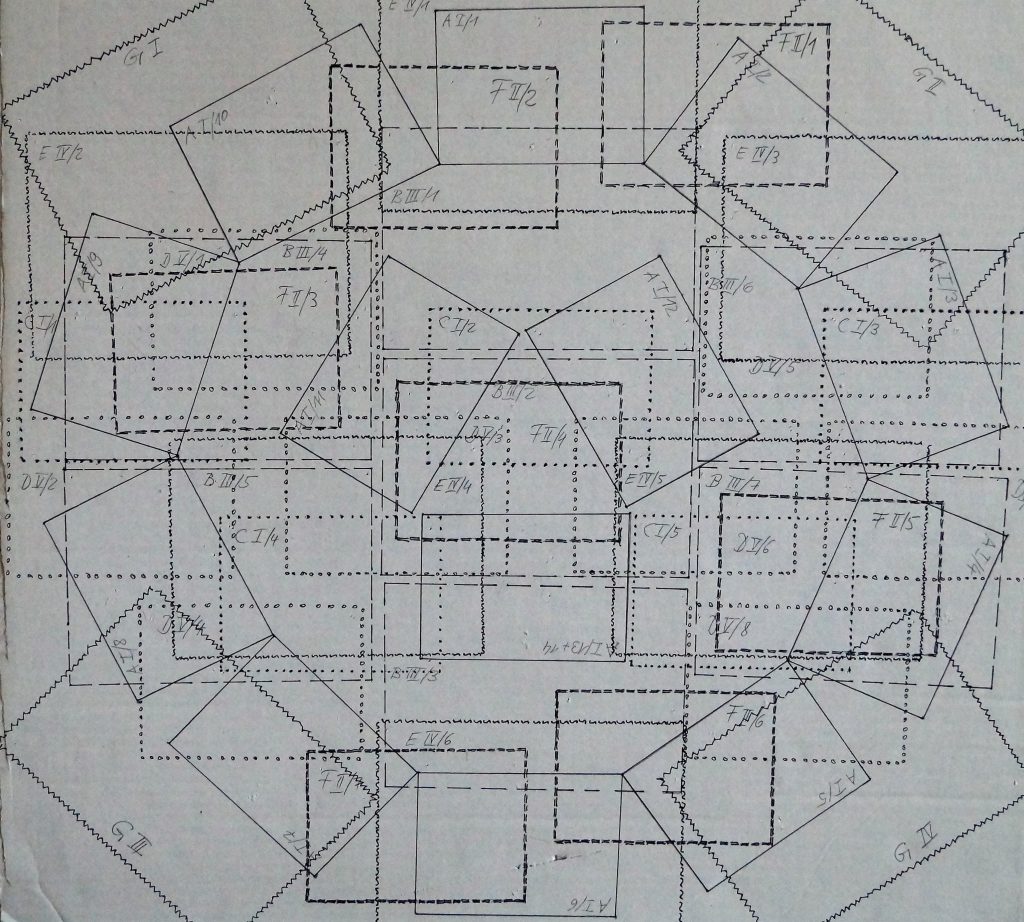
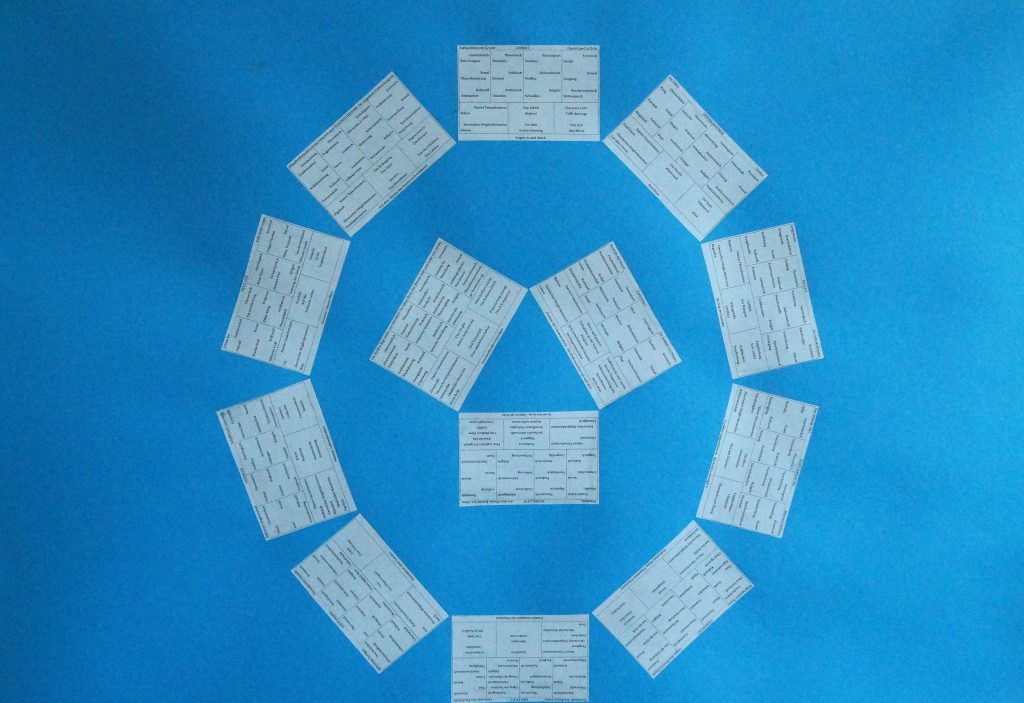
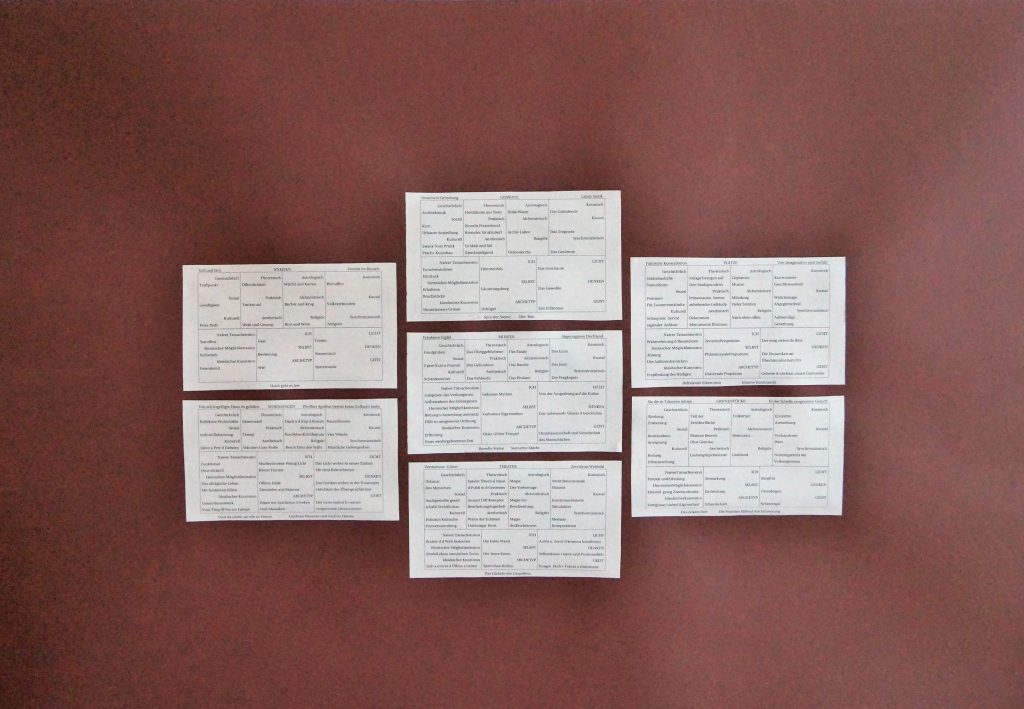
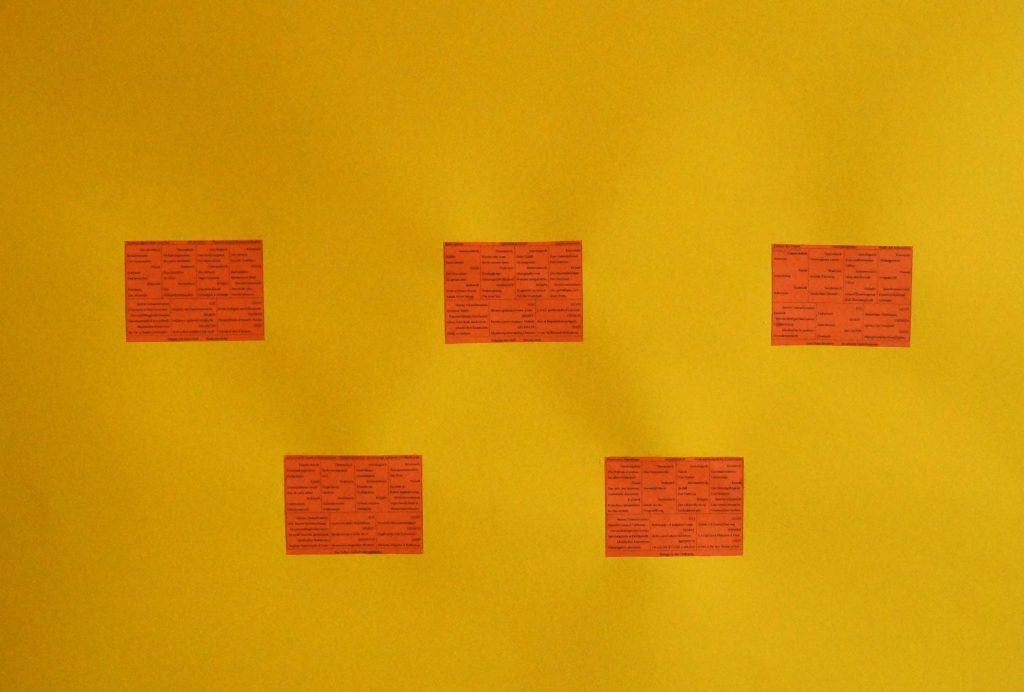
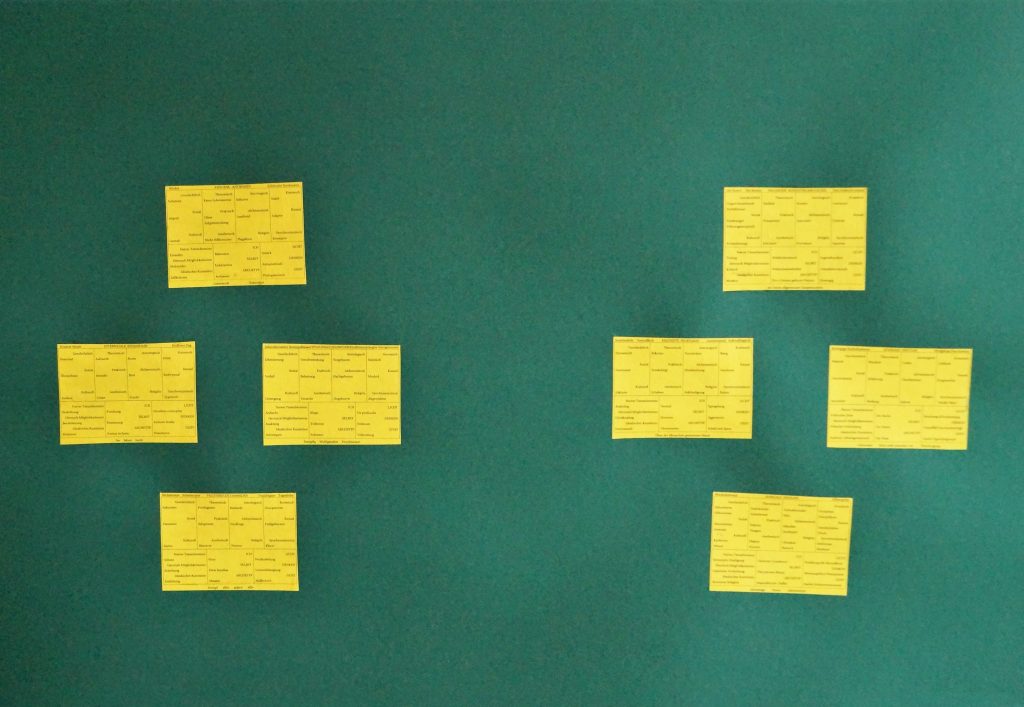

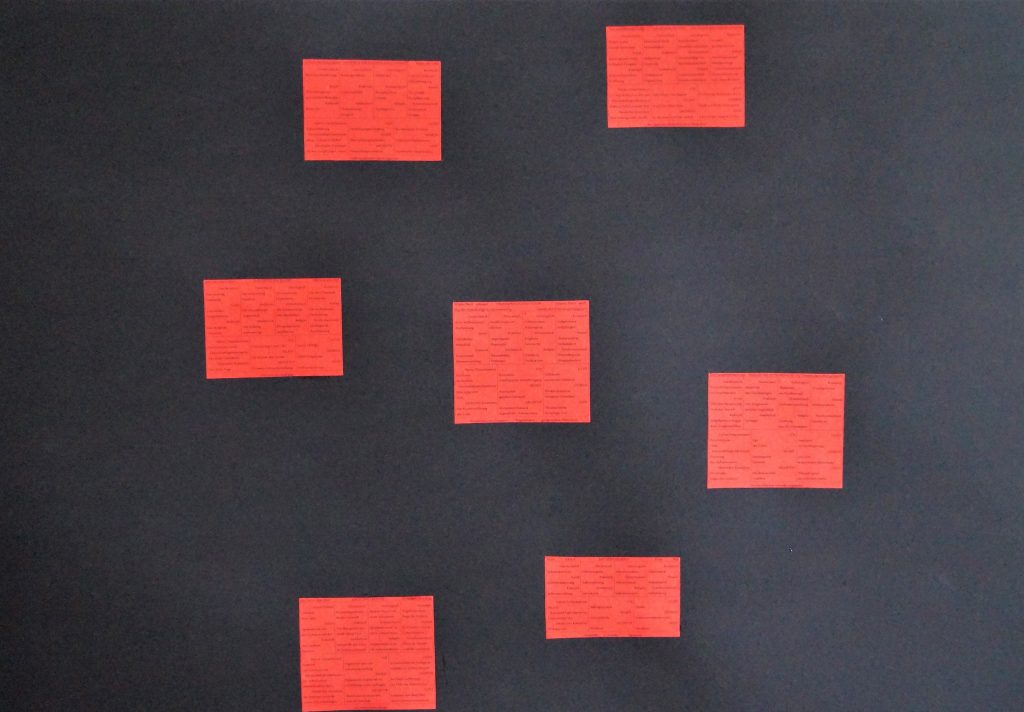
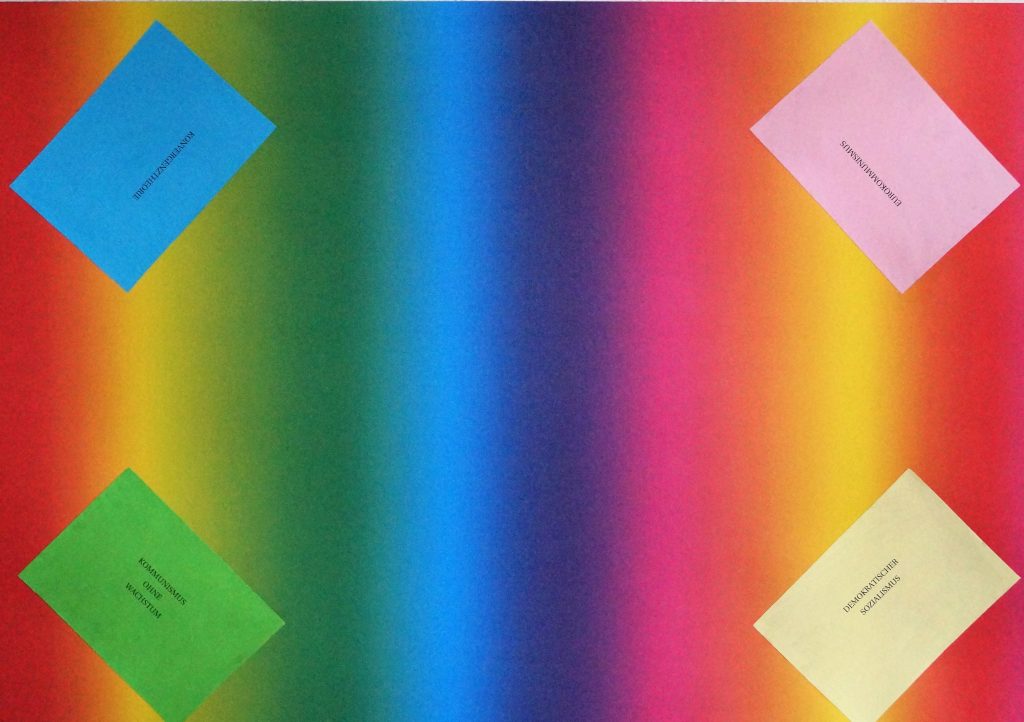
All fotos taken by Christina Nachtsheim.
In the 1990s there was a lot of research into what belongs to GDR literature. Already in the 2000s it became more and more quiet about such apporaches. Now, 30 years “after”, a return is getting underway and considerations are taking place as to how one could see GDR literature from another side again: At a conference in May next year at the Literaturhaus Halle, the journalistic style- literature of the GDR become a topic.
As one of the mian topics to be examindes once again they recall the modernity of GDR literature, which is supposed to hae originally been based on a primordial democratic intention.
With his writing project entitled “The Land of All Evil” Thomas Körner had a democratic request. In particular, the reader can act and ponder autonomously (what Körner calls ensembling).
Contrary to all the literary regulations given by the cultural policy of the GDR or the SED-party or the GDR#s own association of writers, Thomas Körner implemented his own ideas of literature from the start and wrote on his project which, after careful consideration, he titled fragmentary novel.
Why novel ? Because it is the freest form to date in which the writer can work. Körner ist – and remains – looking for a new genus.
Why fragmentary? Not because the novel has remained a fragment, it is not, it is completed according to Körner’s view.
Why fragmented? Not even because the novel is made up of socalled fragments (which can also be seen as chapter?)
Fragment, because the reader views or can form his own (text) fragments by himself.
Fragment, because the reader reads a (fragmented) part from the whole project.
In the GDR was literature censored, at least controlled after it had migrated through regulations from publishing institutions to cultural-political committees. From the regulations, the “reading country” GDR and its democratic readership formed a (country-typical) canon which, als Matthias Buchholz, the archivist of the “Federal Foundation for the Processing of the SED Dictatorship” confirms, can not be broken at all. Reading memories cannot be remodeled after 30 years.
That is why literature that was not or less read in the times of the GDR – or could not be read at all because it had to be kept hidden – will never get the chance to “belong to”.
But Thomas Körner’s fragmentary novel should not be viewed from this perspective either.
From the outset, his intention was to design and create new literature that is different from what is has been before.
He wanted to use innovative techniques and design forms derived from graph theory (structures and algorithms) when writing and, last but not least, publish them digitally on the screen. For Körner’s writing project, the new research of old GDR-literature or its parts is not a starting point, but one has to revisit the discussion about new literature genres on the Internet, which fell asleep at the end of the last century.

Some of the translations:
He has lost the concept of truth
He hates to be the Wiser
He is stupid with pleasure
His stable is his state, his privacy is public
In front of him the television, above him the atomic bomb, it sucks in peace and security
From time to time it cries out aloud:
I don’t want to know anything
In which country would have lived such a pet – we all know.
You can read this poem here.
Körner recognizes already in the seventies that the novel form is not ideal for the screen. He is looking for new forms for his texts. He also suspects that when reading on screen the reader will not focus as much as when reading a book. He is looking for new ways of designing texts that appeal to the reader. During the time of the 70s in the German Democratic Republic (GDR), which he calls vacuole, that he can be “caught” by the state security (stasi) at any time, if he writes down dissident thoughts. The grudge of the surveillance system STASI was not only directed against political criticism, but also against new (art) procedures that do not correspond to socialist realism. New methods were e.g. Cut-ups by William Burroughs, possibly created in a state of intoxication, and new techniques such as visual poetry and surrealistic writing. A new tolerant and open thinking was demanded by the appeal of Leslie Fiedler in 1968: “Cross the border, close the gap”.
As Körner intended no peeking IM (IM was called an informal member of the state security system in the GDR) should find a coherent manuscript with him, he started writing on index cards. In addition, in his narration he switches between a realistic and an ironic language, the voice of the commentary-less realist or barbaroccan cabaret artist. He developed his reading games for two reasons: his fun idea to use socialistic game theory on one hand and thereby hiding his regime-critical thoughts. The staff of the State Security (STASI) lurked everywhere. That’s why you have to mask yourself and your writing.
The American artists Jane and Louise Wilson impressively captured the Stasi’s intimidation and torture tools in Hohenschönhausen Prison in the GDR in a video installation titled STASI CITY. This is currently being shown again in the exhibition Everything is Connected: Art and Conspiracy at the Metropolitan Museum New York:
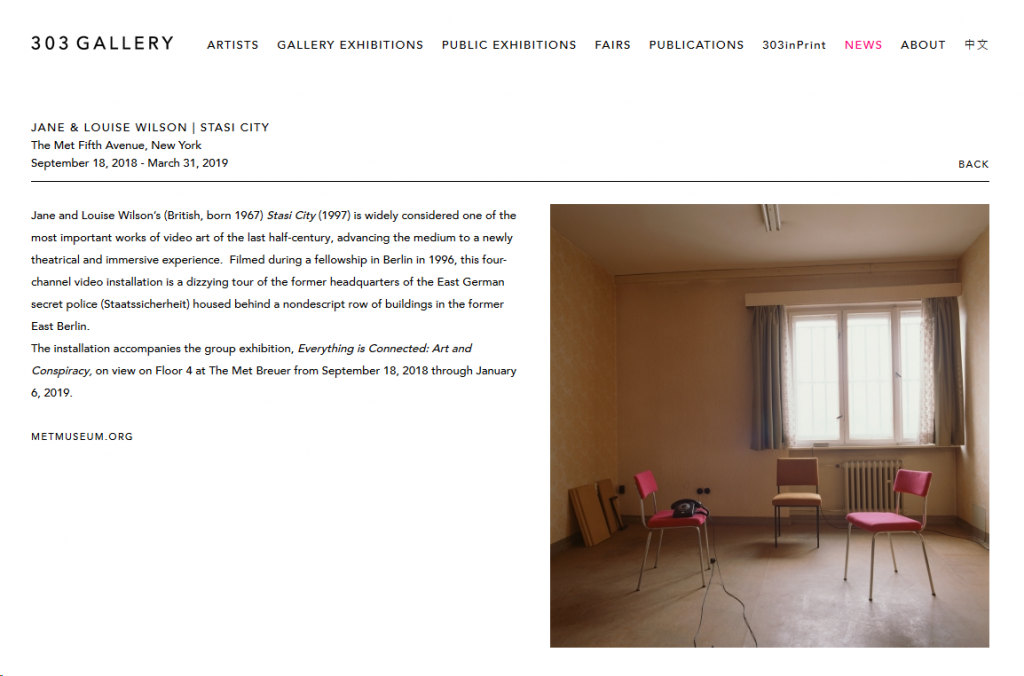
Information about The Met and Jane and Louise Wilson with STASI CITY